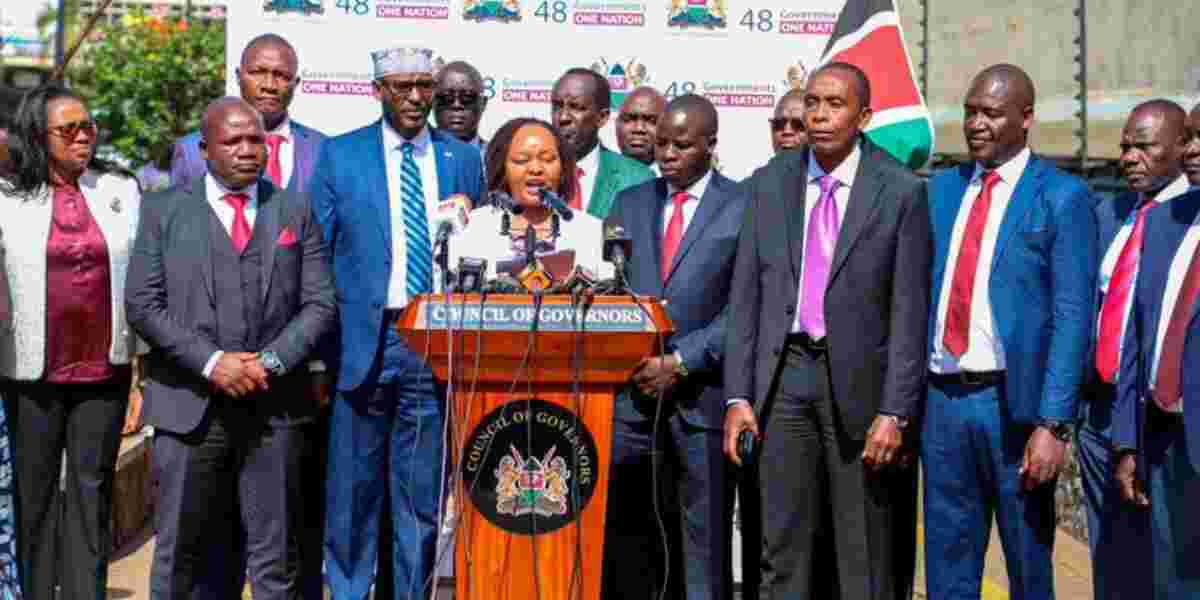Under Kenya’s 2010 Constitution, the devolution framework established 47 counties, each led by a governor elected every five years alongside a deputy governor. As per Article 176, governors serve as the chief executive officers of their counties, tasked with implementing national and county legislation, managing budgets, raising revenue, and representing county interests at the national level. Their responsibilities include:
- Overseeing county development projects (e.g., healthcare, education, infrastructure).
- Ensuring compliance with human rights and security standards.
- Advocating for equitable resource allocation in national forums like “The Summit.”
For businesses, governors’ performance directly influences economic stability—stable counties attract investment, while mismanagement can disrupt trade and logistics. The governors’ salary in Kenya, set by the SRC under Article 230, reflects their stature and the expectations placed upon them.
Governors’ Salary Structure in Kenya: The Breakdown
The salary of a county governor in Kenya is a consolidated package comprising basic pay, allowances, and market adjustments, as outlined in the SRC’s Third Remuneration and Benefits Review Cycle (2021/2022–2024/2025). Below is the detailed structure as of March 2025, adjusted for inflation and fiscal policy updates.
Current Salary Components (2024/2025)
- Basic Salary: Ksh. 594,000 per month
- Up from Ksh. 574,200 in 2023/2024, reflecting a 3.5% increment per SRC’s July 2024 Gazette Notice (reversed then reinstated with fiscal adjustments).
- House Allowance: Ksh. 200,000
- Fixed for all governors, covering Nairobi, Kisumu, Mombasa, and rural counties alike.
- Salary Market Adjustment: Ksh. 196,000
- A variable component aligning pay with market averages, up from Ksh. 182,800.
- Gross Monthly Salary: Ksh. 990,000
- Total before statutory deductions (e.g., PAYE at 30%, NSSF, SHA).
Net Salary After Deductions
- Taxable Income: Approximately Ksh. 792,000 (after NSSF/SHA).
- Net Take-Home: Ksh. 693,000 – Ksh. 720,000 monthly, depending on deductions.
Note: The SRC froze salary increases in July 2024 amid Finance Bill 2024 protests but later implemented modest adjustments, raising governors’ pay from Ksh. 957,000 to Ksh. 990,000 starting January 2025 .
Additional Benefits for Governors
Beyond their monthly salary, governors receive substantial benefits enhancing their compensation:
- Official Transport:
- An official vehicle (engine capacity up to 3000cc), fully maintained by the county.
- No commuter allowance, as transport is government-provided.
- Medical Benefits:
- Annual cover for the governor, one spouse, and up to four children under 25:
- Inpatient: Ksh. 10 million
- Outpatient: Ksh. 300,000
- Maternity: Ksh. 150,000
- Dental/Optical: Ksh. 75,000 each
- Annual cover for the governor, one spouse, and up to four children under 25:
- Official Residence:
- A government-owned house with amenities and staff, not commutable to cash.
- Security:
- Provided as advised by the Inspector-General of Police, non-monetary.
- Annual Leave Allowance:
- Ksh. 50,000 per year, non-commutable.
- Airtime Allowance:
- Ksh. 20,000 monthly for official communication.
- Loans:
- Car loan: Up to Ksh. 10 million (3% interest, 5-year term).
- Mortgage: Up to Ksh. 40 million (3% interest, 20-year term).
- Retirement Benefits:
- Gratuity: 31% of annual basic salary per year served (Ksh. 2.21 million per year, or Ksh. 11.05 million for a 5-year term).
- Pension: Optional, under review by SRC; outgoing governors seek lifetime pensions of Ksh. 739,200 monthly (pending court ruling).
Comparative Analysis: Governors vs. Other Public Officers
To contextualize the governors’ salary in Kenya, here’s how it stacks up:
- President: Ksh. 1.44 million gross (net Ksh. 1.1 million).
- Deputy President: Ksh. 1.23 million gross.
- Cabinet Secretary: Ksh. 990,000 gross (equal to governors).
- Senator: Ksh. 739,600 gross.
- MP: Ksh. 739,600 gross.
- MCA: Ksh. 164,588 gross.
Governors’ pay aligns with Cabinet Secretaries, reflecting their executive status, but exceeds legislators, underscoring their administrative burden. Nationally, the average Kenyan salary is Ksh. 30,000 (KNBS, 2024), meaning governors earn 33 times the average—a stark disparity.
Data Insights: The Cost of Governors’ Salaries
- Annual Salary per Governor: Ksh. 11.88 million (Ksh. 990,000 x 12).
- Five-Year Term: Ksh. 59.4 million per governor, excluding gratuity (Ksh. 11.05 million additional).
- Total for 47 Governors:
- Annual: Ksh. 558.36 million.
- Five-Year Term: Ksh. 2.79 billion (salaries) + Ksh. 519.35 million (gratuity) = Ksh. 3.31 billion.
- Budget Context: The 2024/2025 county allocation is Ksh. 400 billion (Treasury), with governors’ salaries comprising 0.14% annually.
This cost, while significant, is a fraction of county wage bills (e.g., Ksh. 176 billion in 2021, per Controller of Budget), yet it fuels debates on fiscal sustainability.
Factors Influencing Governors’ Salary in Kenya
Several dynamics shape this compensation:
- SRC Mandate: The SRC reviews salaries every four years, balancing economic conditions and public sentiment (next cycle: 2025/2026).
- Economic Climate: Inflation (5.5% in 2024, CBK) and a 4.3% fiscal deficit constrain raises.
- Public Pressure: Protests against the Finance Bill 2024 forced SRC to reverse initial hikes, though modest increases were later approved.
- Job Scope: Governors oversee budgets averaging Ksh. 8.5 billion per county, justifying high pay.
For businesses, these factors highlight the tension between fair compensation and taxpayer burden—a familiar challenge in private sector wage planning.
Implications for Kenyan Businesses
The governors’ salary in Kenya has direct and indirect business impacts:
- Economic Stability: Well-paid governors may prioritize development (e.g., roads, markets), boosting commerce, but mismanagement risks instability.
- Tax Burden: High public salaries contribute to a Ksh. 900 billion wage bill (2024, Treasury), potentially increasing business taxes.
- Investment Climate: Efficient governors attract FDI; 2024 saw Ksh. 150 billion in county projects (KEPSA), partly tied to leadership quality.
- CSR Alignment: Businesses can collaborate with counties on initiatives, leveraging governors’ resources.
A 2024 CoG report notes counties contribute 30% to Kenya’s GDP (Ksh. 3.6 trillion)—governors’ performance, underpinned by their pay, is pivotal.
Challenges and Controversies
The salary structure isn’t without issues:
- Inequality: Governors earn 50 times an MCA’s salary, fueling disparity debates.
- Public Backlash: High pay amid poverty (33% below poverty line, World Bank 2024) sparks criticism.
- Retirement Perks: Outgoing governors’ push for lifetime pensions (Ksh. 2.3 billion annually) faces SRC opposition and legal battles (Business Daily, 2022).
- Fiscal Strain: Counties’ Sh176 billion wage bill (2021) strains service delivery budgets.
These challenges mirror private sector concerns over executive pay versus operational funding.
Future Outlook for Governors’ Salaries
Looking to 2025 and beyond, trends suggest:
- 2025 SRC Review: A 5-10% hike could push salaries to Ksh. 1.04 million – Ksh. 1.09 million monthly.
- Pension Ruling: A court decision on lifetime pensions could add Ksh. 1.3 billion annually.
- Budget Shifts: A proposed Ksh. 410 billion county allocation (2025/2026) may fund raises.
- Public Oversight: Digital transparency tools (e.g., CoG portals) may pressure SRC for moderation.
Businesses should anticipate these shifts, as they’ll influence county spending and tax policies.
How Governors Are Paid: The Process
- Source: Salaries are drawn from county revenue allocations, managed by the National Treasury.
- Disbursement: Monthly payments via the Integrated Financial Management Information System (IFMIS).
- Oversight: SRC and Controller of Budget ensure compliance, with audits by the Auditor-General.
This structured approach ensures accountability, a model businesses can adapt for payroll efficiency.





